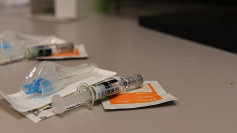A new analysis from Johns Hopkins University reveals a sharp decline in measles, mumps, and rubella (MMR) vaccination rates across most U.S. counties since the COVID-19 pandemic, coinciding with a troubling resurgence of measles outbreaks nationwide. The study, published Monday in JAMA, found that 78% of 2,066 counties across 33 states reported lower childhood MMR vaccination rates between 2019 and 2024.
The national average for county-level MMR coverage dropped from 93.92% before the pandemic to 91.26% after, moving further from the 95% threshold required to maintain herd immunity against measles. Only four states-California, Connecticut, Maine, and New York-recorded an increase in county-level vaccination rates.
"This open, high-resolution dataset provides a critical resource to explore and better understand the country's vaccination landscape and its implications for the risk of measles spread," said Lauren Gardner, director of the Center for Systems Science and Engineering at Johns Hopkins and senior author of the report.
Gardner emphasized the importance of understanding coverage at the county level, noting that state averages can mask local vulnerabilities. "You could have a state level average that is around 95%, which looks pretty good... but, in reality, you may have a group of counties with coverage around 100% and another group... at 90% or below. So, you actually really have a lot at risk," she told ABC News.
The findings mirror national data from the Centers for Disease Control and Prevention (CDC), which reported that 92.7% of kindergartners received two doses of the MMR vaccine during the 2023-2024 school year. This marks a continued decline from 93.1% the year prior and 95.2% in the 2019-2020 school year.
The new report comes amid growing alarm over measles outbreaks. As of Friday, the CDC confirmed 1,088 measles cases in 32 states this year-the highest in five years. Roughly 96% of cases were among individuals who were either unvaccinated or had unknown vaccination status. Three measles-related deaths have been reported in 2024, including two children and one adult, all unvaccinated.
Gardner called the problem urgent but solvable. "We have a very safe and very effective vaccine that is available," she said.
The Johns Hopkins dataset was compiled from state health departments and includes at least one year of two-dose MMR vaccination data for kindergartners in 2,237 counties across 38 states. It offers a more granular view of national trends and builds on Gardner's previous work developing the widely used Johns Hopkins COVID-19 dashboard.
Dr. Whitney Harrington, a pediatric infectious diseases specialist at the University of Washington who was not involved in the study, said decreased disease exposure and rising vaccine hesitancy may be driving the decline. "As we've seen less exposure to these diseases... there's been rising concern about safety of vaccines," she told ABC News.
The CDC recommends two doses of the MMR vaccine-first between 12 to 15 months and the second between ages 4 to 6. A single dose is 93% effective against measles; two doses increase protection to 97%.






